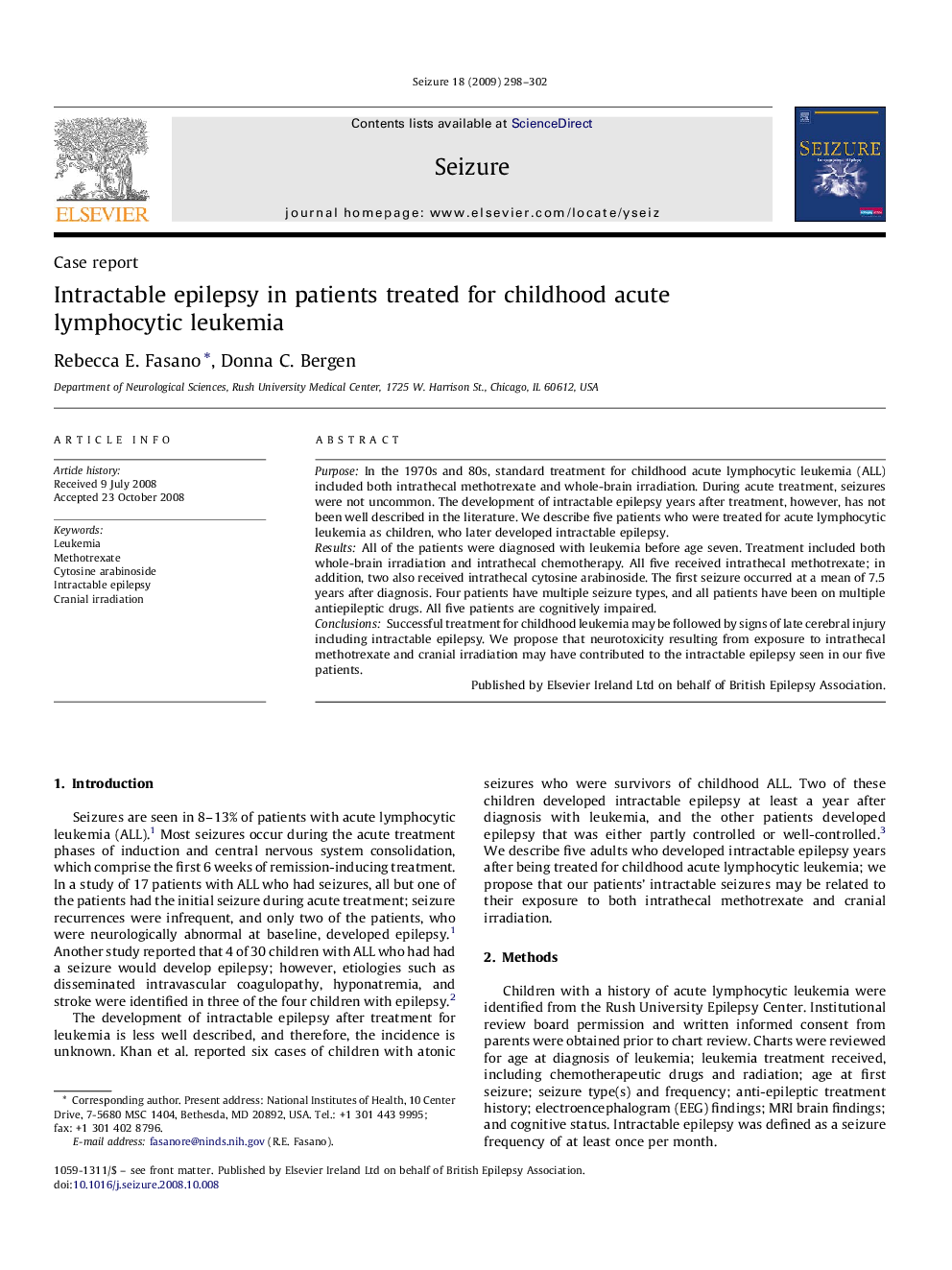| Article ID | Journal | Published Year | Pages | File Type |
|---|---|---|---|---|
| 341119 | Seizure | 2009 | 5 Pages |
PurposeIn the 1970s and 80s, standard treatment for childhood acute lymphocytic leukemia (ALL) included both intrathecal methotrexate and whole-brain irradiation. During acute treatment, seizures were not uncommon. The development of intractable epilepsy years after treatment, however, has not been well described in the literature. We describe five patients who were treated for acute lymphocytic leukemia as children, who later developed intractable epilepsy.ResultsAll of the patients were diagnosed with leukemia before age seven. Treatment included both whole-brain irradiation and intrathecal chemotherapy. All five received intrathecal methotrexate; in addition, two also received intrathecal cytosine arabinoside. The first seizure occurred at a mean of 7.5 years after diagnosis. Four patients have multiple seizure types, and all patients have been on multiple antiepileptic drugs. All five patients are cognitively impaired.ConclusionsSuccessful treatment for childhood leukemia may be followed by signs of late cerebral injury including intractable epilepsy. We propose that neurotoxicity resulting from exposure to intrathecal methotrexate and cranial irradiation may have contributed to the intractable epilepsy seen in our five patients.
